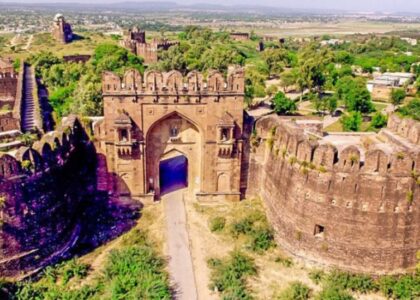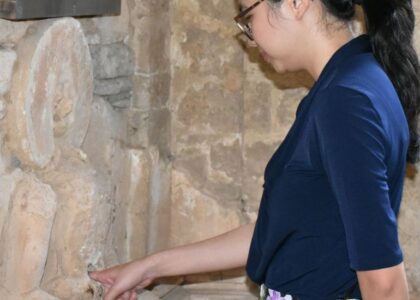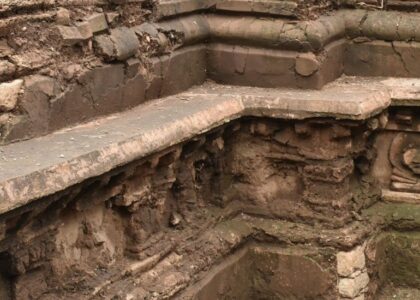Exploring the Enigmatic Ranikot Fort: The Great Wall of Sindh
Nestled in the captivating landscapes of the Jamshoro District of Sindh, not far from Sann, lies the majestic Ranikot Fort – an architectural marvel that resonates with history and mystery. With a staggering diameter of approximately 32 kilometres, Ranikot Fort claims its fame as the world’s largest fort, often referred to as The Great Wall of Sindh. As you embark on a journey through its ancient walls and hidden stories, Graana.com presents a comprehensive guide to help you unravel the secrets of Ranikot Fort.
Frequently Asked Questions (FAQs) about Visiting Ranikot Fort:
1. Is it advisable to visit Ranikot Fort with a Nissan Days car? How are the road conditions?
You can go to Ranikot Fort in a Nissan Dayz car, but it’s better to use a 4×4 vehicle due to rough roads within the fort area. The road is about 30 km long and drivable, but it’s recommended to have a more rugged vehicle.
2. What is the Address , Timing and facts of Ranikot Fort?
Address : Ranikot fort Wall, Karchat, Jamshoro, Sindh
Timings
Wednesday 8 am–7 pm
Thursday 8 am–7 pm
Friday 8 am–7 pm
Saturday 8 am–7 pm
Sunday 8 am–7 pm
Monday 8 am–7 pm
Tuesday 8 am–7 pm
Suggest new hours
Phone: (021) 99212126
Length: 31 km (19 mi)
Founded: 1812
Material: Stone and lime mortar
3. Is there mobile signal coverage at Ranikot Fort? There is no mobile signal coverage within the fort itself, but you might get signals near the wall before entering the fort area.
4. How can we promote and spread awareness about Ranikot Fort? It’s suggested to share information about such places publicly. Many parts of Sindh and Baluchistan remain unexplored. Social media platforms like Facebook can be used to share experiences and pictures.
5. How far is Ranikot Fort from Karachi? It takes approximately 4 hours and 16 minutes to reach Ranikot Fort from Karachi, covering a distance of around 80-90 km/h.
6. What is the weather like at Ranikot Fort? The weather at Ranikot Fort is usually windy, especially at night. Daytime might feel hot and sunny, while the nights are cooler due to the winds.
7. Can we camp overnight near Ranikot Fort? Yes, Ranikot Fort is suitable for night camping. Many recommend camping near Pariyo Ja Thal Lake, where you can enjoy dipping your feet in the lake with fish.
8. Are there any nearby spots to visit apart from Meeri Kot and Pariyun jo Tarh? Meeri Kot and Pariyun jo Tarh are the main spots at Ranikot Fort. There are some additional morchas (watchtowers) on the upper ground, but they might require difficult hikes.
9. How much time does it take to reach Paryun jo Tarh from Runnikot Fort? To reach Paryun jo Tarh from Runnikot Fort, it takes around 40 minutes. You can drive to a certain point and then walk for about 15 minutes.
10. Which cars are suitable for visiting Ranikot Fort? Can a Cultus carry 4 people? A Cultus is considered suitable for visiting Ranikot Fort, and it can carry 4 people comfortably.
11. Is it safe to visit Ranikot Fort with family? Yes, Ranikot Fort is generally safe for family visits. However, it’s recommended to plan according to the weather and road conditions.
12. What are the timings for visiting Ranikot Fort? Ranikot Fort is usually open during the day, and it’s advisable to visit during daylight hours. The exact opening hours may vary.
13. Can we camp inside the fort? Camping inside the fort itself is not allowed. Camping is recommended on the ground near the fort or at specific camping areas.
14. Are there washrooms available at Ranikot Fort? There are washroom facilities available, typically Asian-style toilets.
15. Who built Ranikot Fort? Ranikot Fort was constructed under the supervision of Nawab Wali Mohammad Khan Leghari, the Prime Minister of Sindh, in 1819 AD.
16. What’s the history of Ranikot Fort? Ranikot Fort was built in 1819 AD by Nawab Wali Mohammad Khan Leghari. It’s a historical fort with a strategic significance.
17. Is Ranikot Fort open on Eid holidays? Yes, Ranikot Fort is usually open during Eid holidays, but it’s advisable to check the specific timings and conditions closer to your visit.
18. Is there a lake or pond near Ranikot Fort? Yes, there is a pond called “Miri Kot” near Ranikot Fort, about 5 km away. It’s a source of fresh water and a pleasant spot to visit.
19. Can we visit Ranikot Fort after a flood? After a flood, the situation might be affected, but you can visit Ranikot Fort using a jeep or 4-wheel drive to navigate through the conditions. Always check the current situation before planning a visit.
The Historical Tapestry: The chronicles of Ranikot Fort are as intricate as its walls. Believed to be built in the 17th century, this colossal structure is a testament to the might of the Talpur dynasty. Contrary to earlier beliefs that attributed its construction to civilizations like the Sassanians, Scythians, Parthians, or Bactrian Greeks, recent evidence points towards its Talpur origins. During the reign of Nawab Wali Muhammed Leghari, the fort underwent significant reconstruction in the early 18th and 19th centuries. Its historical significance has earned it a place under the Antiquities Act of 1975, ensuring its preservation.
A Gateway to Adventure: Ranikot Fort beckons with its grandeur, waiting to be explored by intrepid travelers. Situated just 90 kilometers north of Hyderabad on the Indus Highway, the fort is a convenient journey from both Hyderabad and Karachi. The rugged 21-kilometer path from Sann leads to the majestic eastern gate of the fort, known as Sann Gate. The nearby railhead at Sann, connected to the Kotri-Larkana line, offers another route to access this historical gem. Enveloped within the Kirthar National Park, the fort is not only a gateway to history but also an adventure into the heart of nature.
Unveiling the Fort’s Features: The colossal ramparts of Ranikot Fort dominate the horizon, offering a sight reminiscent of the Great Wall of China. Stretching over 31 kilometers, the fort connects various peaks of the Kirthar hills along contours. Its semi-circular bastions tell tales of its storied past, while the natural steepness of the northern perimeter adds an element of awe. Meeri Fort, nestled within Ranikot, carries echoes of royalty, serving as the palace for the Mir royal dynasty. The fort’s intricate architecture, built with stone and lime mortar, showcases the ingenuity of its creators. Four rhomboid-shaped entry gates – Sann Gate, Amri Gate, Shah-Pere Gate, and Mohan Gate – provide access to its secrets, each guarding its own stories.
A Window into Restoration: Nawab Wali Muhammed Leghari, a key figure in the Talpur dynasty, embarked on the fort’s initial restoration. From the Sann Gate complex to the mosque and the Meeri fort, these restoration efforts breathed new life into the historical monument. However, allegations of subpar construction and favoritism in awarding contracts raised concerns. An enquiry was initiated in 2005, revealing that the restoration work did not align with the “Venice Charter for the Conservation and Restoration of Monuments and Sites.” Subsequently, further restoration work was halted, underscoring the significance of preserving the fort’s authenticity.
Embrace the Experience: Visiting Ranikot Fort is an experience that transcends time. As you traverse its corridors and pathways, you walk in the footsteps of history, embracing the mystique that surrounds this monumental structure. The panoramic views from the fort’s ramparts offer a unique perspective of the surrounding landscapes, leaving you mesmerized by the interplay of nature and architecture. Many tour operators promote Ranikot Fort as an ideal day-trip destination from Karachi, offering recreational activities like musical nights and bonfires, while camping enthusiasts can find solace within its walls.
Major Characteristics of the Great Ranikot Fort
- Massive Scale: The fort spans an impressive length of approximately 31 kilometers, making it one of the largest fortifications globally.
- Breathtaking Landscapes: Nestled within the Kirthar hills, the fort’s walls connect various barren peaks, offering panoramic views of the surrounding landscapes.
- Semi-Circular Bastions: The fort’s walls are adorned with numerous bastions, and three of them feature a distinct semi-circular shape, adding to the fort’s architectural grandeur.
- Natural Steepness: The northern part of the fort’s perimeter boasts a natural high hilly formation, enhancing the fort’s defensive characteristics.
- Fortification Walls: On three sides, the fort’s perimeter is enclosed by robust fortification walls, demonstrating the defensive prowess of its design.
- Meeri Fort: Situated within the larger fort complex, Meeri Fort is located approximately three kilometers from the Sann Gate. It is believed to have served as the palace for the Mir royal dynasty.
- Stone and Lime Mortar Construction: The entire fort structure is meticulously crafted using a combination of stone and lime mortar, showcasing the architectural craftsmanship of its builders.
- Zigzag Pattern: Ranikot Fort’s design follows a zigzag pattern, with its walls intricately woven to create a unique and imposing layout.
- Multiple Entry Gates: The fort features four entry gates, each designed in the shape of a rhomboid. These gates are named Sann Gate, Amri Gate, Shah-Pere Gate, and Mohan Gate.
- Crossed by Sann River: Two of the gates, Sann Gate and Amri Gate, are crossed diagonally by the Sann River, creating a dramatic visual impact.
- Ornate Niches: Within the entry gates, visitors can find two niches adorned with floral decorations and intricately carved stones, adding an artistic touch to the fort’s architecture.
- Well-Preserved Sann Gate: The Sann Gate, an entrance to the fort, is remarkably well-preserved and offers visitors the opportunity to climb to its top for a panoramic view of the surroundings.
Final Thoughts: As you plan your voyage to Ranikot Fort, remember to immerse yourself in its stories, respect its history, and admire its resilient architecture. This monument stands not only as a physical embodiment of the past but also as a testament to the human spirit’s ability to create wonders that endure through time. Explore the fort’s enigmatic pathways, touch its weathered walls, and let the echoes of centuries past guide your journey through Ranikot – The Great Wall of Sindh.






